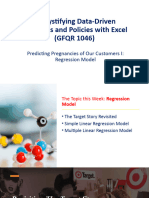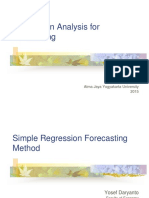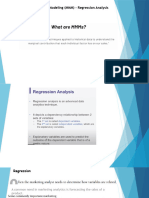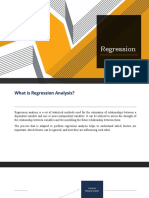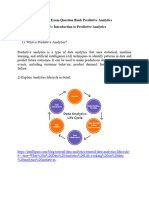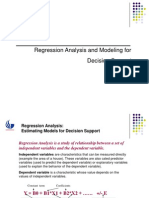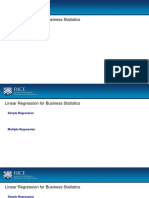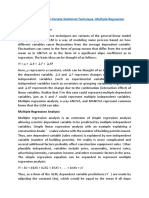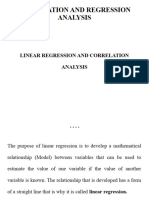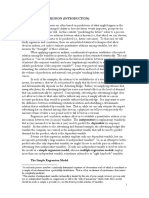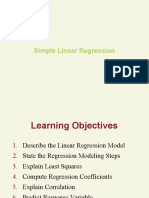Predictive analytics and decision making - Part 1
"Regression is used to determine the relationship between the variable that you are interested in and the
other variables that may have an influence on the variable of interest."
In regression terminology, there are two types of variables:
Dependent variable: The variable of our interest (that we are studying) is called the dependent variable
or response variable. It is usually denoted by ‘Y’ or 'y'. For instance, sales or market share.
Independent variable: The variable that is used to explain the dependent variable, is called the
independent variable or explanatory variable. It is usually denoted by ‘X’ or 'x'. For instance, the
marketing spend in each channel.
For a straight line y = m(x)So for simplicity sake, let's say there is a constant baseline component of
sales. the linear equation will become:
y = m(x) + constant
�Hypothesis Testing in Simple Linear Regression
Null Hypothesis
The null hypothesis in our example will be that GRP in print media (or print media effort) does
not significantly influence total unit sales and that mathematically, this can be represented as:
b1=0 , where b1 is the coefficient of GRP in print(X) in the equation Y=b0+b1X
Alternative Hypothesis
The alternative hypothesis will be that GRP in print media has a significant influence on the
sales, which, mathematically, can be represented as:
b1≠0, where b1 is the coefficient of GRP in print(X) in the equation Y=b0+b1X
If P value < Critical Value, then Reject the Null Hypothesis
P value > Critical value then fail to reject the Null Hypothesis
� Propensity to buy model: This model is mainly used for the prospective customers or
leads. This will help the firms to predict the likelihood of a lead buying your product or
services.
o This will help you determine and prioritise the leads and thereby increasing your
lead conversion rate, therefore saving your marketing costs.
Propensity to churn model: This model is mainly used for the existing customers. This
will help the firm to predict the likelihood of a customer leaving your service or not
making a repeat purchase from you.

